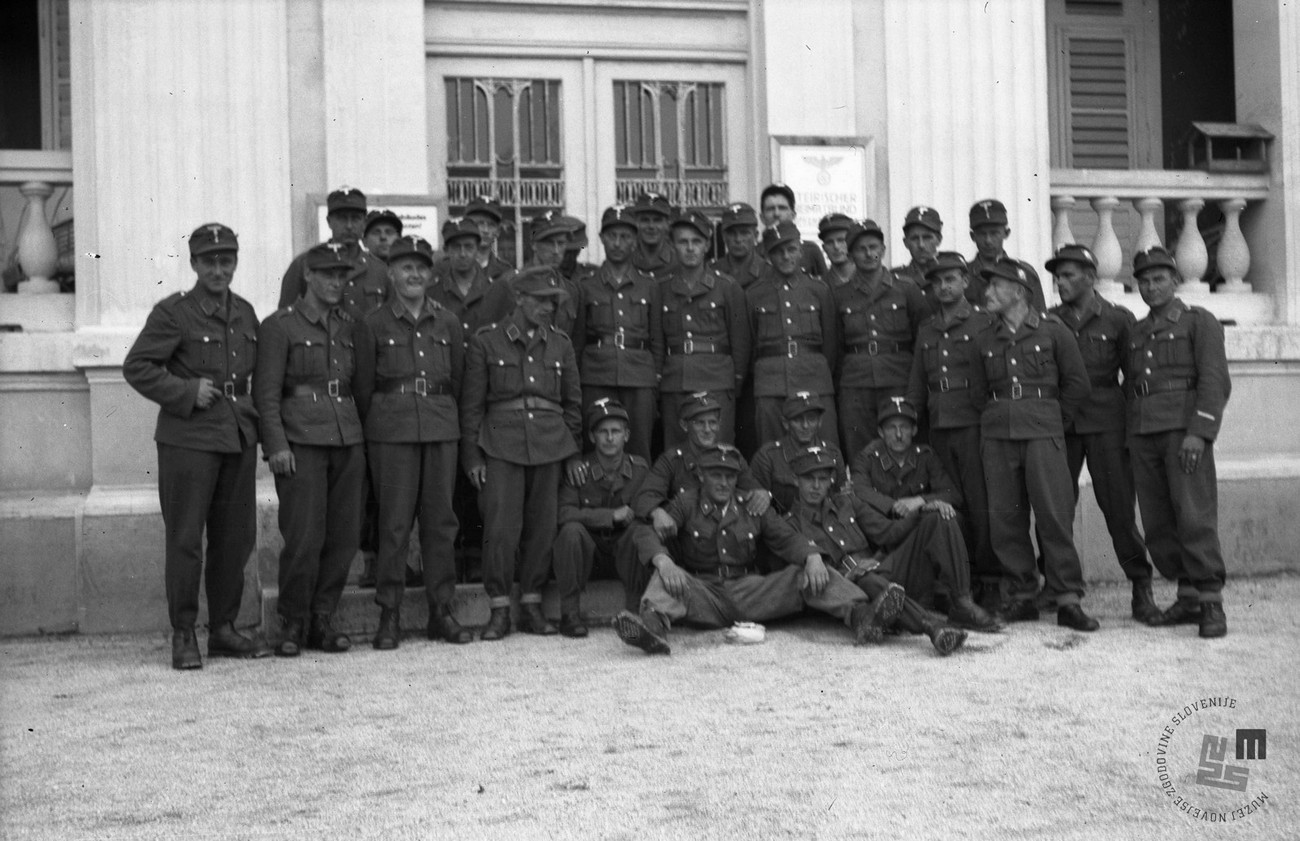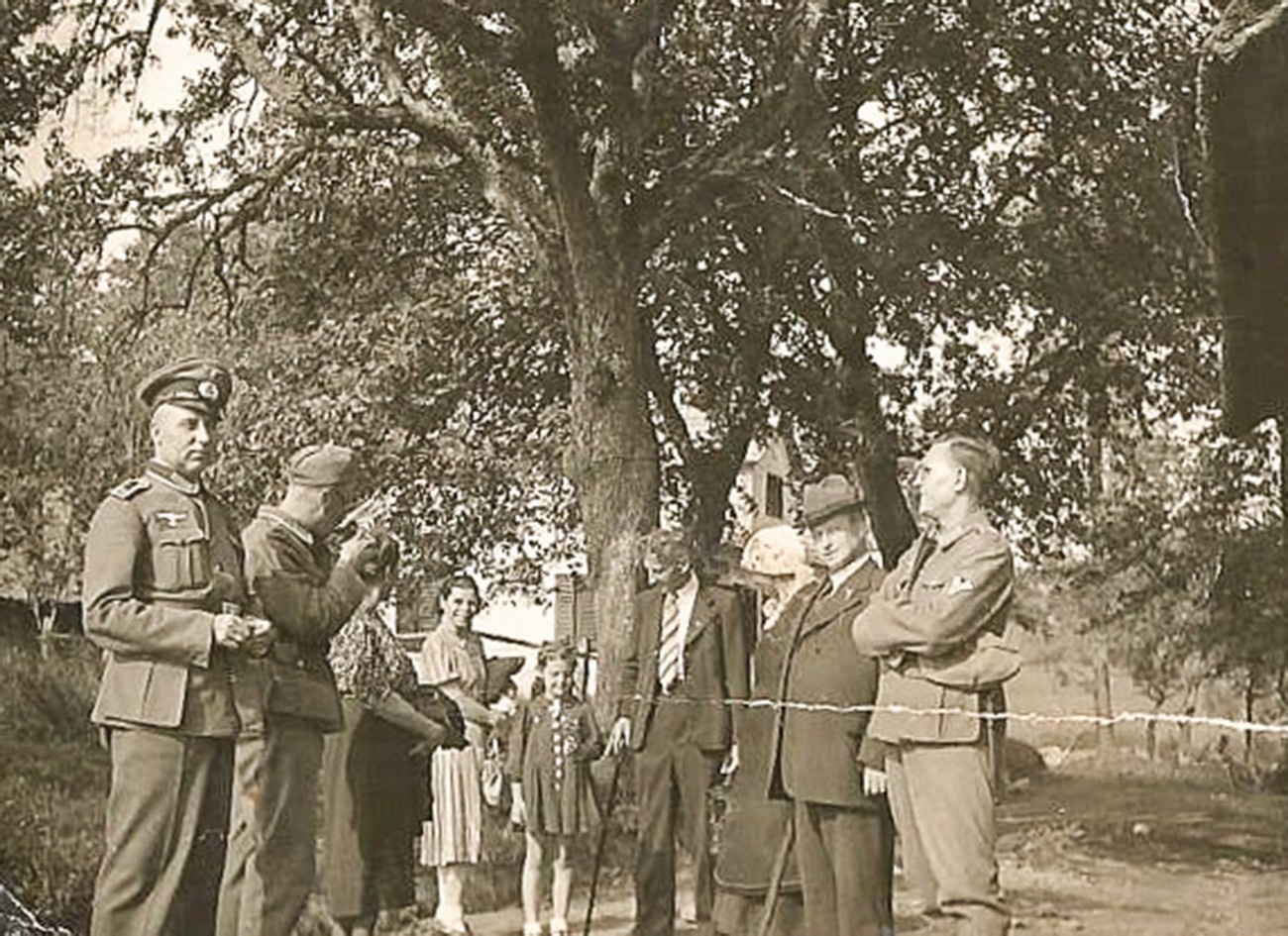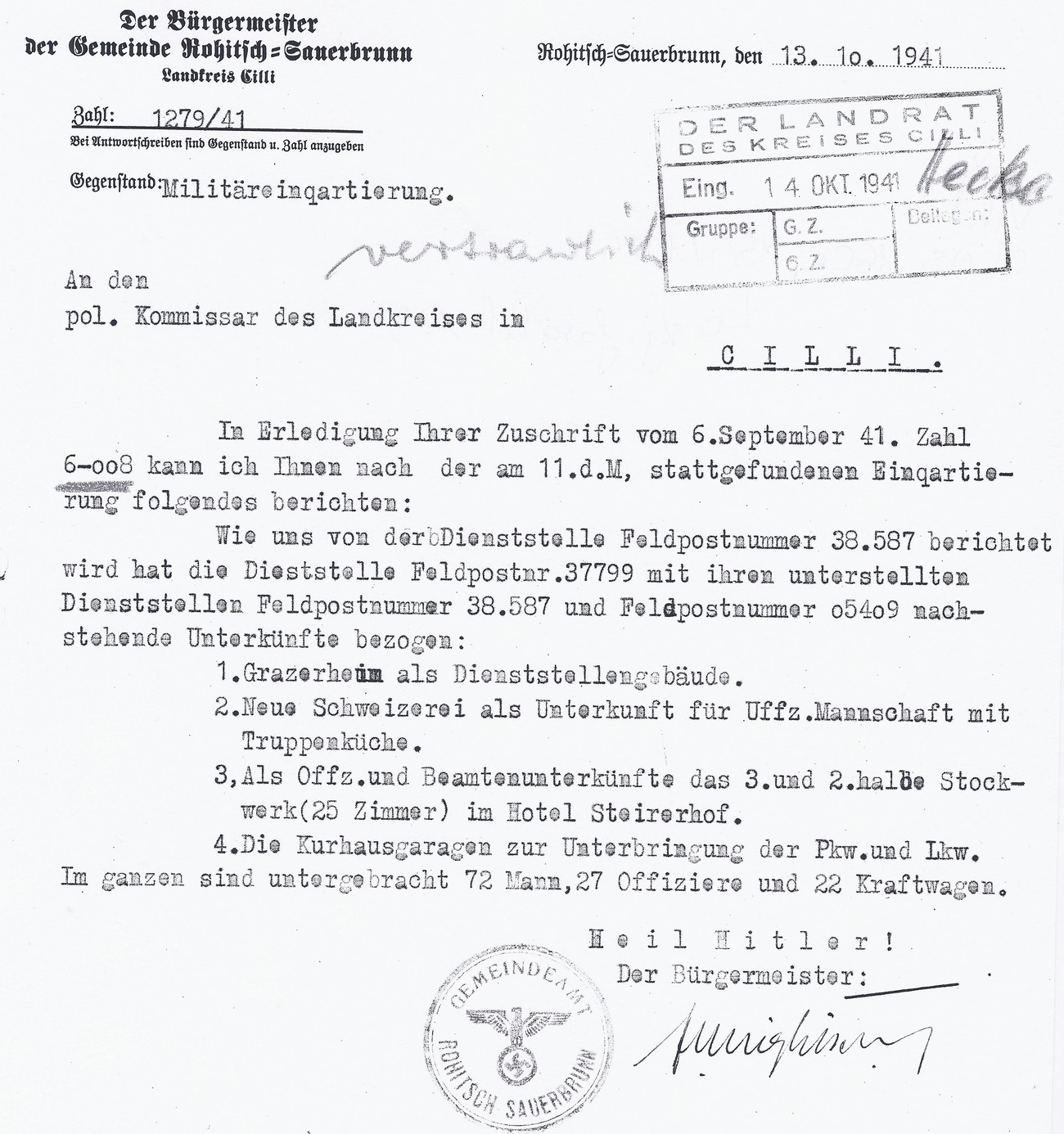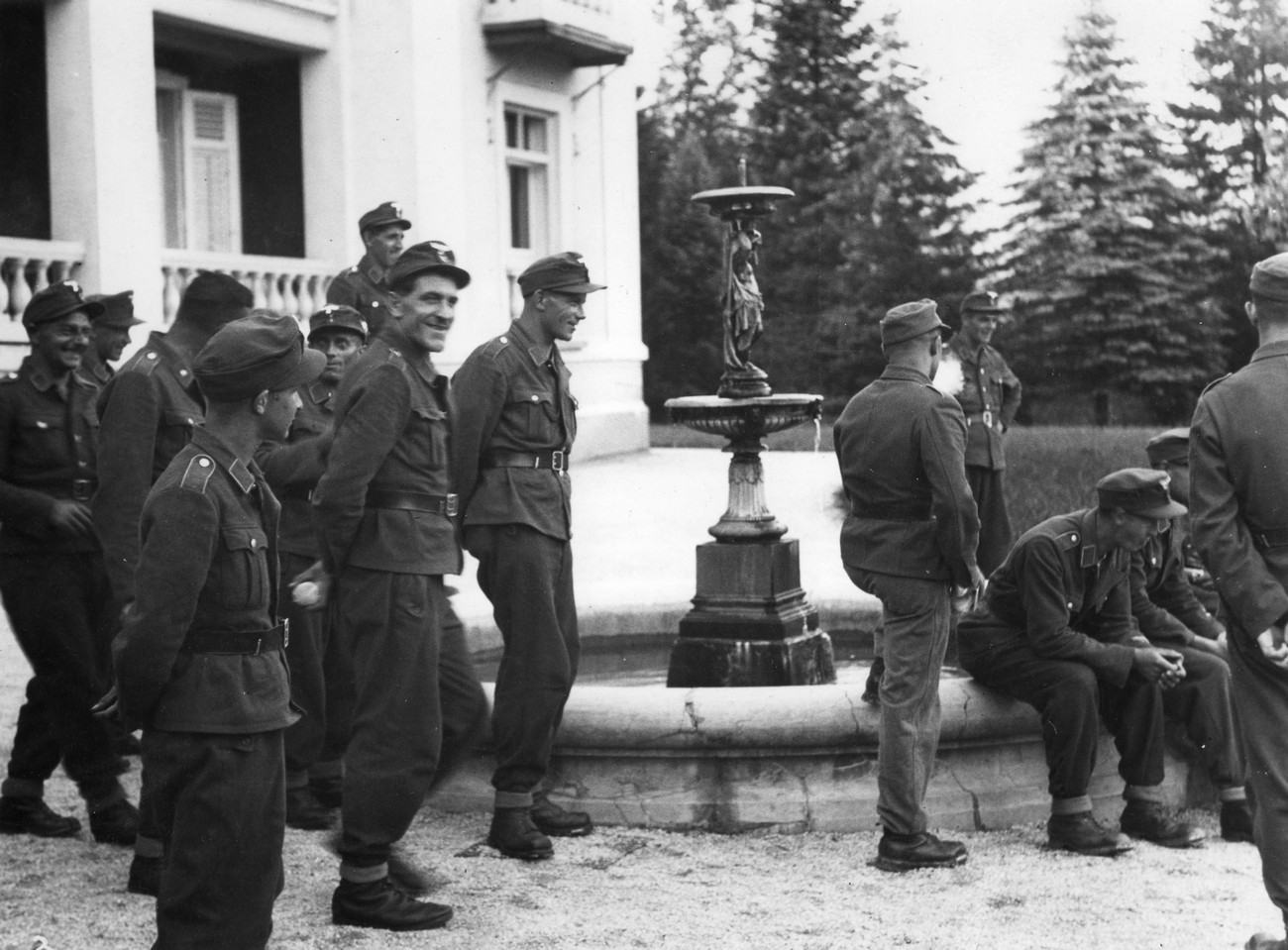On a cloudy and foggy Palm Sunday on 6 April 1941, German bombers took off from the assembly points in the vicinity of Graz first thing in the morning and began their destructive bombing of military airports near Ljubljana, Brežice and Zagreb. Rogaška Slatina avoided the initial bombing raids but only for a short time. Based on information from the fifth column about the district command of the Drava Division temporarily fleeing to Slatinski dom [Mineral Spring House] in Rogaška Slatina, the Luftwaffe dropped several bombs over Rogaška Slatina as early as 9 April. Two landed near Slatinski dom and one near the house of Regina Čonč. There were no fatalities or casualties. In the early morning of 11 April, units of the German 51st Army Corps penetrated the Pečica Pass and reached the important hub in the settlement of Podplat, where they set up their army headquarters. A segment of the units continued towards Rogaška Slatina, Đurmanec and Zagreb, while the other segment turned towards Mestinje and Brežice. In Podplat, at the western edge of the health resort, two young boys were killed by Nazi gunfire late in the morning.
Arrival of the German Army to Rogaška Slatina and Establishment of an Occupation Administration
While endless queues of the most modern army to date were rolling toward Rogaška Slatina, those at the health resort were preparing to take over the power apparatus. The Kulturbund trio – Gustav Učesanek, Ludvik Brežinšek and Herman Neckermann – took over the municipal administration on 12 April 1941 on behalf of all the Germans in Rogaška Slatina (volksdeutscher) and waited for the German mayor (Amtsbürgermeister). Management of the municipality was entrusted to the founder and president of the local Schwäbisch-Deutscher Kulturbund (Swabian-German Cultural Association), the engineer Herbet Miglitsch. On 14 April, he took over the management of the occupation municipality at Občinski dom [Municipal Hall] in Rogaška Slatina as the Ortsgruppenführer. He was assisted with the administrative work by a secretary, assistant and typist. Miglitsch's takeover of the municipal office on 14 April coincided with Hitler's command to begin the implementation of German civil administration in the occupied areas in Slovenia.
On 16 April, armed detachments of the SA (Sturmabteilung), the NSSK (National Socialist Motorised Corps) and the infamous secret state police (Gestapo) arrived in Rogaška Slatina. Some of them were stationed at the Triglav Hotel beneath the Janina Hill, and some at the Gestapo headquarters in Občinski dom. Both buildings also housed prisons and torture chambers. Gestapo also had offices in Ljubljanski dom [Ljubljana Hall] and Slovenski dom [Slovene Hall]. SA chose the Erzherzog Johann Hotel (the present-day Aleksander Hotel) as its base of operations, because its view enabled the best supervision over the health resort. In the following months and years, the Rogaška Slatina SA ran a school in this building for training the commanding officers of the Slovene Wehrmannschaft (the armed branch of the Styrian Patriotic League (Steirischer Heimatbund)), in which various courses and competitions were held for leaders and deputy leaders.
Opposite the municipal building, in the Čonč Villa, was the base of the regional group of the Styrian Patriotic League; it was presided by Mayor Miglitsch and it oversaw the complete Germanisation of the people of Rogaška Slatina. When applying for the league, they had to submit a statement of their parents' and grandparents' Aryan origin. Based on special racial examinations, which were performed in the extension of the pharmacy building (called Tržaški dom [Trieste Hall] before the war) opposite the Pošta Hotel, they had to obtain the appropriate racial and political marks. From the end of May to the end of June 1941, no one from the Šmarje District received top marks; most of them were assigned to the 3rd racial group – out of four. Applications were by no means voluntary, as the people of Rogaška Slatina were forced to choose between two options: join the league and hopefully prevent exile, or go to prison or be deported immediately.
Next to the railway station, a special labour office (Arbeitsamt) was set up soon after the seizure of power; it kept an inventory of the labour force statistics in Rogaška Slatina. After a general labour obligation was introduced in the spring of 1942, labour conscripts had to go to this office to get a work visa and the proper paperwork to travel to the heart of the Reich. Marijin dom [Mary's Hall] on the present-day Stritarjeva ulica street became the base of the forest administration.
Soon after arriving in Rogaška Slatina in 1941, the occupying forces began setting up administrative authority in the town, establishing administrative bodies and appointing reliable local staff (mostly volksdeutscher), who started taking on the clerical functions in the following weeks. As early as mid-April, Robert Komarek, the political commissioner of Šmarje pri Jelšah was stationed here with his staff; he moved the base of his district office from Šmarje to the Grazerheim Hotel (Ljubljanski dom). With 6,850 inhabitants (October 1941), Rogaška Slatina was the second largest unit in the Šmarje District, which encompassed 12 municipalities with 44,995 or 51,525 inhabitants (June 1941), while Hum was still part of the Third Reich's territory. After the Šmarje District Office was disbanded (18 June), Miglitsch's municipality became subordinate to Dorfmeister's office in Celje.
![A troop of 60–70 German soldiers lined up on 11 April 1942 in front of Zdraviliški dom [Health Resort Hall] in Rogaška Slatina, where a solemn celebration was held on the first anniversary of the German “liberation” of this resort town. Standing in the background, on the far left and right are boys from the Hitler Youth, who had rooms in the Pošta Hotel. Standing between them are Wehrmannschaft units. Source: School chronicle of the Kostrivnica Primary School.](https://www2.sistory.si/publikacije/razstave/Okupacijske_meje/Pictures/exh02/exh02-Meje-pano6-image1-normal.jpg)
![In front of the bottling facility at the heart of the health resort in Rogaška Slatina. Source: personal archive of Nani Poljanec, Ljudski muzej Rogaška Slatina [Rogaška Slatina Folk Museum].](https://www2.sistory.si/publikacije/razstave/Okupacijske_meje/Pictures/exh02/exh02-Meje-pano6-image2-normal.jpg)

![Immediately after their arrival, the Germans seized Učiteljski dom [Teachers' Hall], the Matanič Hotel, the house of Katoliško društvo [Catholic Society], Sokolski dom [Sokol Hall], Občinski dom [Municipal Hall] (previously Železničarski dom [Railway Hall]), the Sretenovič Villa (the base of Nacionalsocialistična ljudska blaginja [National Socialist People's Welfare] and of Nemška zveza žena [German Association of Female Citizens (NS-Frauenschaft)]) and two villas owned by the Orthodox priest Zuranović and a female professor from Zagreb, Zora Ilič. It should be added that this list mentions only the seizures from the initial period of occupation and is by no means complete. Later on, the Gestapo appropriated other property too: the Klanjšček pharmacy, Antonija Drofenik's catering establishment, the Pošta Hotel and Restaurant, the residential buildings of deported owners, and the Bofulin estate in Irje (livestock rearing for the needs of the occupying forces). Archives of the RS.](https://www2.sistory.si/publikacije/razstave/Okupacijske_meje/Pictures/exh02/exh02-Meje-pano6-image4-normal.jpg)


